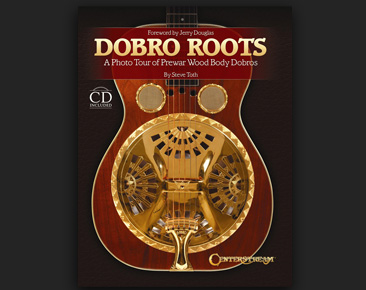John Dopyera had started National in 1927, only to leave a year later to form a competing company with four of his brothers. Dopyera Brothers was shortened to Dobro, and one of the most iconic brands in the history of bluegrass was born. So iconic, in fact, that many people today use the name Dobro to generically refer to any resonator guitar, regardless of the builder.
Dopyera had founded National to market a tri-cone resonator, only to soon discover that a single cone was both louder and less-expensive to manufacture. Given that the entire purpose of resonator guitars was to make them loud enough to be heard over other instruments in a band, John wanted to pursue that type of construction, and designed a single cone model whose patent was listed in his partner’s name. When we went to Dobro, he turned the cone upside down to avoid infringing.
But in 1932, he was able to merge the Dobro and National companies under the same roof making single cone, inverted cone, and tri-cone models in both wooden and metal bodies. Over time, bluegrass sliders came to favor the Dobro-style, inverted single cone design, and most of the reso-guitars you are likely to see today are built that way.
Steve Toth, a reso-enthusiast and collector of vintage Dobros, has put together a gorgeous volume that will have tremendous appeal to his fellow lovers of pre-war instruments. Dobro Roots – A Photo Tour of PreWar Wood Body Dobros is just as the title implies, a glossy, large format volume with plenty of pictures of early Dobro guitars, catalogs, and advertisements.
Toth only covers guitars made prior to 1941, and there is no discussion of the revivals of the brand or its current status as a part of the Gibson Guitar company. That’s for another book, on another day.
In addition to the high resolution, full page images of the instruments, Toth includes an audio CD with the book which features 15 tracks of him playing 15 different vintage Dobros. Some are reconditioned guitars, but most are all-original.
With even a shallow interest in the history of American stringed instruments, this volume will educate and delight. For serious Dobro fans, it’s a must-have. You guys finally have something to match wits with all the banjo, guitar, and mandolin books!
Dobro Roots runs to 216 pages, and includes a foreword by Jerry Douglas. It shows a price from the publisher (Hal Leonard) of $55 for the book/CD package. Many online resellers have it available as well.
